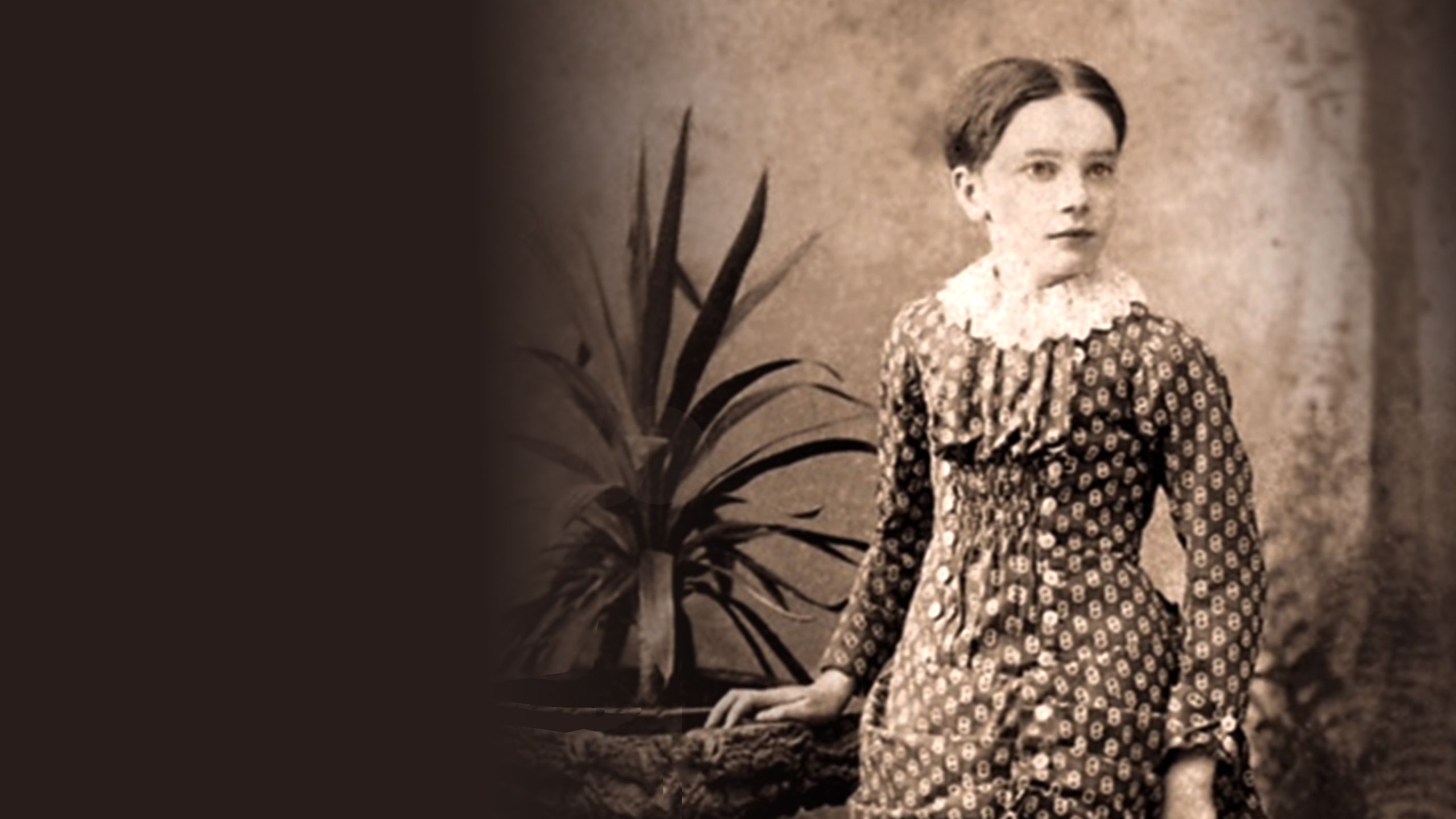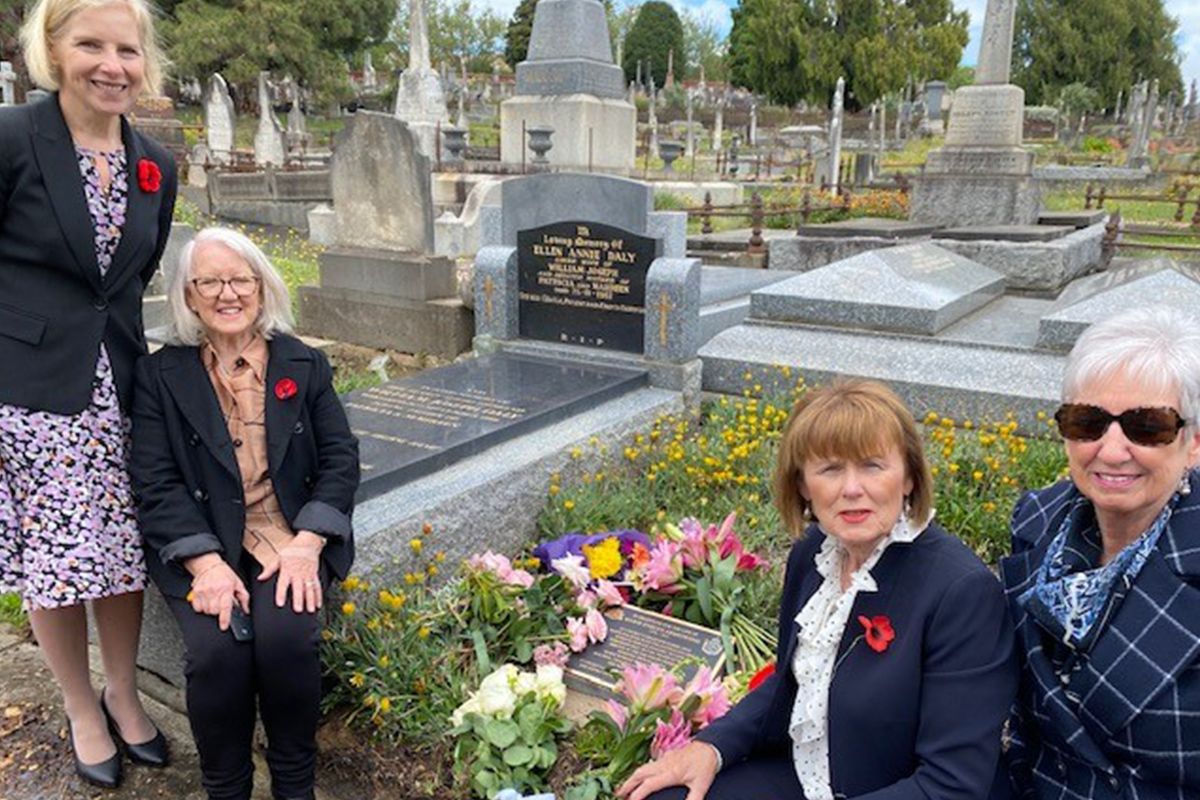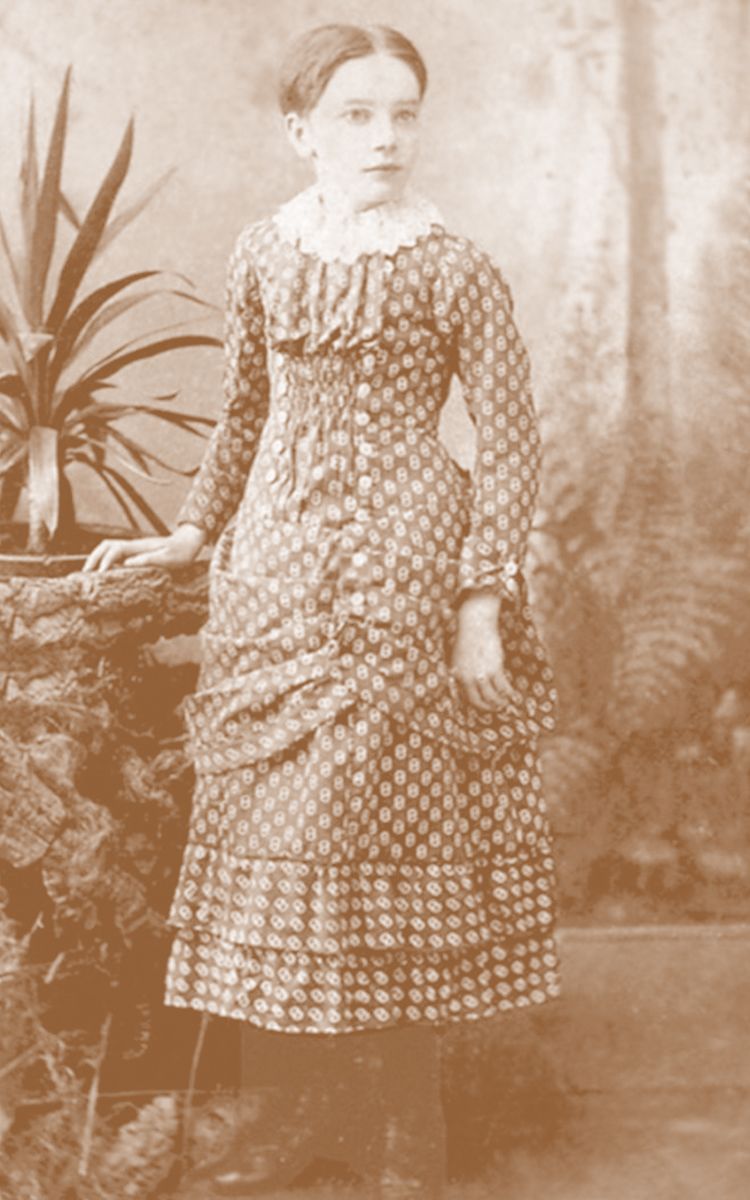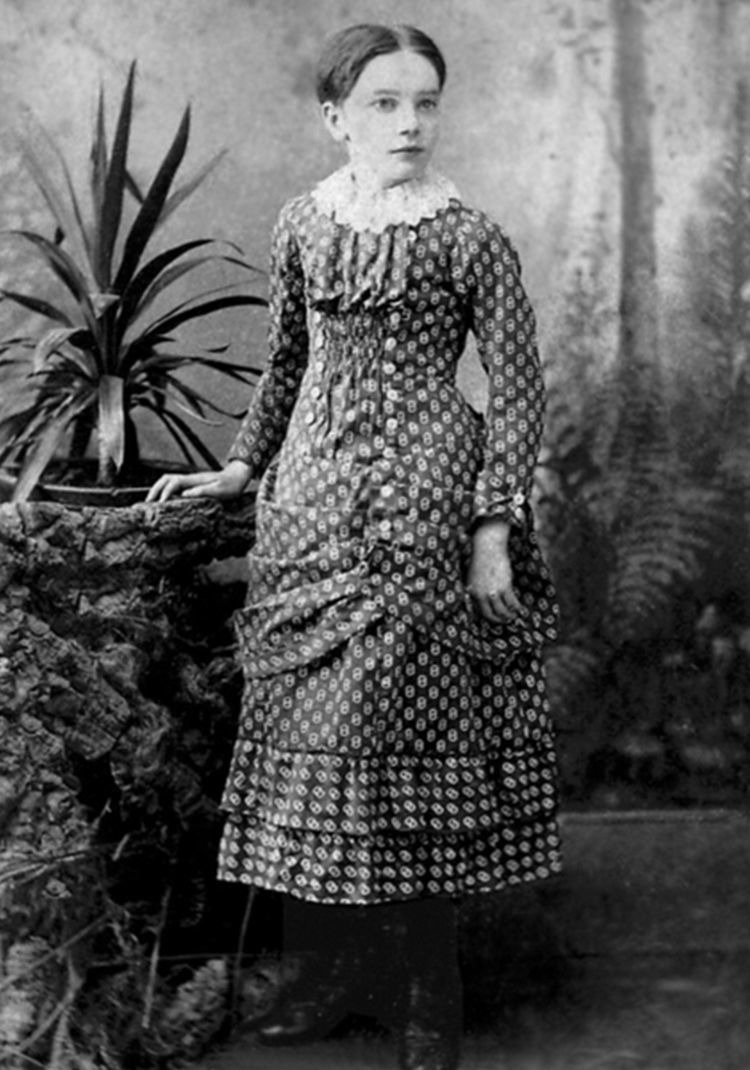Remembering
WWI nurse Marie Evelyn Armstrong

‘Her endurance was perhaps made stronger by the knowledge of the greater endurance of the patients she cared for.’
On Remembrance Day 2021, ANMF (Vic Branch) Secretary Lisa Fitzpatrick joined other nurses at Boroondara General Cemetery in Kew to observe a special occasion: the unveiling and installation of a plaque for World War 1 St Vincent’s graduate nurse Marie Evelyn Armstrong, who had until that point been buried there in an unmarked grave.
Marie Armstrong’s final resting place had been discovered several years earlier by Maureen Mitchell, a volunteer with the St Vincent’s Archives and Heritage Centre. Sometime later, Maureen presented this information at an Anzac Day lecture attended by Paula Furze, secretary of the St Vincent’s Graduate Nurses’ Association. After the lecture, Maureen approached Paula to ask if the Graduate Nurses would consider funding a plaque for the grave. ‘She told me later she thought she was being a little bit cheeky in even asking,’ Paula recalls of their meeting.
Cheeky or not, the Graduate Nurses’ Association agreed to fund the plaque because it was ‘a valuable thing to do’, Paula says, and because of the strong link it provides present-day St Vincent’s nurses with their predecessors – especially those such as Marie, who nursed through an era of great crisis. ‘We wanted to recognise for the future the early St Vincent’s nurses, and what they did [during the war].’
This was the start of a three-year journey for Paula and her colleagues Margaret Batrouney and St Vincent’s Hospital archivist Barbara Cytowicz.
With the help of the ANMF (Vic Branch), which made a small contribution towards the plaque, the Graduate Nurses’ Association was able to cover the cost of the Sisters of Charity crest. The Sisters of Charity founded Melbourne’s St Vincent’s Hospital in 1893, and Paula notes that their crest is usually reserved for nuns of the order; she had to get special permission for its use in a lay situation. They also had to get permission from the Department of Veterans Affairs to use the Australian Army rising sun crest.
‘We wanted to use both on the plaque,’ Paula says, ‘but it took a long time to get all that in place.’
Their dedication and commitment paid off with the ‘extremely moving’ unveiling ceremony at the gravesite. They played The Last Post and spoke to the history – both Marie’s own and more generally about nurses during the war. Paula says they were especially honoured to have Marie’s great great nephew Stephen in attendance.
Speaking on the day, Stephen noted that it was ‘an opportunity to reflect on the strong sense of duty that Marie displayed throughout her life. Her endurance was perhaps made stronger by the knowledge of the greater endurance of the patients she cared for.’
Says Paula, ‘we felt connected to Marie after this. We felt that we had honoured her.’
On Remembrance Day 2021, ANMF (Vic Branch) Secretary Lisa Fitzpatrick joined other nurses at Boroondara General Cemetery in Kew to observe a special occasion: the unveiling and installation of a plaque for World War 1 St Vincent’s graduate nurse Marie Evelyn Armstrong, who had until that point been buried there in an unmarked grave.
Marie Armstrong’s final resting place had been discovered several years earlier by Maureen Mitchell, a volunteer with the St Vincent’s Archives and Heritage Centre. Sometime later, Maureen presented this information at an Anzac Day lecture attended by Paula Furze, secretary of the St Vincent’s Graduate Nurses’ Association. After the lecture, Maureen approached Paula to ask if the Graduate Nurses would consider funding a plaque for the grave. ‘She told me later she thought she was being a little bit cheeky in even asking,’ Paula recalls of their meeting.
Cheeky or not, the Graduate Nurses’ Association agreed to fund the plaque because it was ‘a valuable thing to do’, Paula says, and because of the strong link it provides present-day St Vincent’s nurses with their predecessors – especially those such as Marie, who nursed through an era of great crisis. ‘We wanted to recognise for the future the early St Vincent’s nurses, and what they did [during the war].’
This was the start of a three-year journey for Paula and her colleagues Margaret Batrouney and St Vincent’s Hospital archivist Barbara Cytowicz.

St Vincent’s Hospital Chief Nursing Officer Kath Riddell with Paula Furze and Margaret Batrouney. Photo: Lisa Fitzpatrick
St Vincent’s Hospital Chief Nursing Officer Kath Riddell with Paula Furze and Margaret Batrouney. Photo: Lisa Fitzpatrick
With the help of the ANMF (Vic Branch), which made a small contribution towards the plaque, the Graduate Nurses’ Association was able to cover the cost of the Sisters of Charity crest.
The Sisters of Charity founded Melbourne’s St Vincent’s Hospital in 1893, and Paula notes that their crest is usually reserved for nuns of the order; she had to get special permission for its use in a lay situation. They also had to get permission from the Department of Veterans Affairs to use the Australian Army rising sun crest.
‘We wanted to use both on the plaque,’ Paula says, ‘but it took a long time to get all that in place.’
Their dedication and commitment paid off with the ‘extremely moving’ unveiling ceremony at the gravesite. They played The Last Post and spoke to the history – both Marie’s own and more generally about nurses during the war. Paula says they were especially honoured to have Marie’s great great nephew Stephen in attendance.
Speaking on the day, Stephen noted that it was ‘an opportunity to reflect on the strong sense of duty that Marie displayed throughout her life. Her endurance was perhaps made stronger by the knowledge of the greater endurance of the patients she cared for.’
Says Paula, ‘we felt connected to Marie after this. We felt that we had honoured her.’
‘The hospital was staffed by just 59 Australian sisters and 15 Indian temporary nurses to handle a workload of 2,188 patients.’
Born in Bendigo in 1870, Marie Armstrong was the eldest of three children. Her mother died when Marie was still young, and as the eldest she became carer to her siblings.
She returned to caring as an adult by becoming a nurse – though she came to it later than many: she was in her 40s when she began her training at St Vincent’s Hospital.
In 1915, Marie joined ANMF’s predecessor, the Victorian Trained Nurses Association. In 1916, she enlisted with the Australian Army Nursing Service, followed by the Australian Imperial Force on 13 January 1917. She was 46 when she enlisted but her service records and embarkation roll (above) show her age as 36 – it is thought she rounded down her age to maximise her application’s chance of success, as most nurses who served at the time were under the age of 40.
Marie departed Melbourne on the RMS Khiva on 29 May 1917, bound for the 34th Welsh General Hospital (34 WGH) in Deolali, India. 34 WGH was a large hospital complex of old army huts and stone buildings, housing somewhere between 30001 and 50002 beds. At one point, the hospital was staffed by ‘just 59 Australian sisters and 15 Indian temporary nurses to handle a workload of 2,188 patients’3.
Adding to the 34 WGH nurses’ stress was the ‘particularly enervating’4 climate of Deolali – for which their uniforms were uniquely unsuitable – and the ever-present risk of cholera and malaria.
While not much is documented about Marie’s time there, it’s possible to get a sense of what it might have been like for her from the writings of the acting matron at the time, fellow Victorian nurse Alma Louise Bennett. Bennett details ‘a strenuous and anxious time’ during which ‘all the Sisters, medical officers and orderlies [had] to be vaccinated against small pox [sic] and inoculated against plague.’
On top of cholera, malaria, smallpox and the plague, the 34 WGH nurses and their patients – many of them Turkish POWs – also had to contend with the 1918 influenza pandemic, as well as scandalous rumours spread by British officers.
Marie, however, wouldn’t have to deal with it for too much longer: she was diagnosed with breast cancer, and a report in The Age on 27 August 1918 notes that she had been repatriated among the ‘returned wounded’. She did not return to nursing, and died at the Heidelberg Repatriation Hospital on 22 June 1953.

A family photo of Marie Armstrong as a young girl (circa 1880s), courtesy of Stephen Spicer
A family photo of Marie Armstrong as a young girl (circa 1880s), courtesy of Stephen Spicer
Born in Bendigo in 1870, Marie Armstrong was the eldest of three children. Her mother died when Marie was still young, and as the eldest she became carer to her siblings.
She returned to caring as an adult by becoming a nurse – though she came to it later than many: she was in her 40s when she began her training at St Vincent’s Hospital.
In 1915, Marie joined ANMF’s predecessor, the Victorian Trained Nurses Association. In 1916, she enlisted with the Australian Army Nursing Service, followed by the Australian Imperial Force on 13 January 1917. She was 46 when she enlisted but her service records and embarkation roll (above) show her age as 36 – it is thought she rounded down her age to maximise her application’s chance of success, as most nurses who served at the time were under the age of 40.

A family photo of Marie Armstrong as a young girl (circa 1880s), courtesy of Stephen Spicer
A family photo of Marie Armstrong as a young girl (circa 1880s), courtesy of Stephen Spicer
Marie departed Melbourne on the RMS Khiva on 29 May 1917, bound for the 34th Welsh General Hospital (34 WGH) in Deolali, India. 34 WGH was a large hospital complex of old army huts and stone buildings, housing somewhere between 30001 and 50002 beds. At one point, the hospital was staffed by ‘just 59 Australian sisters and 15 Indian temporary nurses to handle a workload of 2,188 patients’3.
Adding to the 34 WGH nurses’ stress was the ‘particularly enervating’4 climate of Deolali – for which their uniforms were uniquely unsuitable – and the ever-present risk of cholera and malaria.
While not much is documented about Marie’s time there, it’s possible to get a sense of what it might have been like for her from the writings of the acting matron at the time, fellow Victorian nurse Alma Louise Bennett. Bennett details ‘a strenuous and anxious time’ during which ‘all the Sisters, medical officers and orderlies [had] to be vaccinated against small pox [sic] and inoculated against plague.’
On top of cholera, malaria, smallpox and the plague, the 34 WGH nurses and their patients – many of them Turkish POWs – also had to contend with the 1918 influenza pandemic, as well as scandalous rumours spread by British officers.
Marie, however, wouldn’t have to deal with it for too much longer: she was diagnosed with breast cancer, and a report in The Age on 27 August 1918 notes that she had been repatriated among the ‘returned wounded’. She did not return to nursing, and died at the Heidelberg Repatriation Hospital on 22 June 1953.
[1] Ruth Rae, ‘Reading between unwritten lines: Australian Army nurses in India, 1916–1919’, Journal of the Australian War Memorial, issue 36 (accessed 12/02/22)awm.gov.au/articles/journal/j36/nurses
[2] UNA, the Journal of the Royal Victorian Trained Nurses’ Association, 30 October 1918, p243
[3] Ruth Rae, ibid
[4] ibid
With thanks to St Vincent’s Hospital archivist Barbara Cytowicz and ANMF (Vic Branch) librarian Kathleen Fitzgerald for their help and additional research on this piece.
